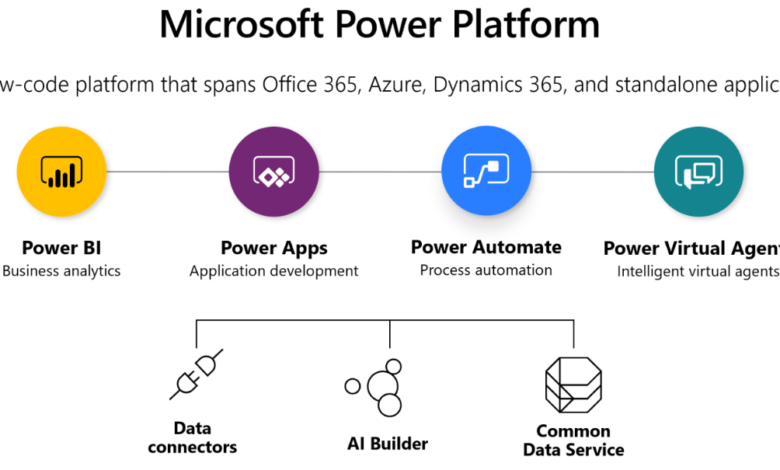Building Customized Business Solutions with Microsoft Power Platform and Microsoft 365

Learn how Microsoft Power Platform and Microsoft 365 work together to empower organizations, helping them create customized apps, automate workflows, analyse data, and enhance collaboration without extensive coding. Harness the synergy of low-code development, automation, and data analysis to drive efficiency, innovation, and competitiveness in today’s dynamic market.
In today’s rapidly evolving business landscape, agility and adaptability are key to staying competitive. Organizations need solutions that can be tailored to their unique processes and requirements without the burden of extensive coding and development. This is where the synergy of Microsoft Power Platform and Microsoft 365 comes into play, empowering businesses to create customized solutions that drive efficiency, productivity, and innovation.
We reached out to a London-based Microsoft Partner, TechQuarters, that has worked with the Microsoft business solutions for over a decade. For this article, we called upon TechQuarters’ experience providing IT support services in London, to produce a breakdown of the customizability of the Microsoft 365 platform. Read on to see how Microsoft 365 and Power Platform work together to help organisations build tailored business solutions.
The Power of Microsoft Power Platform
Microsoft Power Platform is a suite of low-code and no-code tools that enable users to build applications, automate workflows, analyse data, and create virtual agents, all without the need for in-depth programming knowledge. This platform consists of four main components: Power Apps, Power Automate, Power BI, and Power Virtual Agents.
- Power Apps: With Power Apps, businesses can design custom apps that cater to specific processes or tasks. The drag-and-drop interface makes it accessible for both technical and non-technical users to create apps that integrate seamlessly with data sources like SharePoint, SQL Server, and Microsoft 365 services.
- Power Automate: Formerly known as Microsoft Flow, Power Automate lets users automate repetitive tasks and workflows across different applications and services. This not only saves time but also reduces the risk of errors and ensures consistency in processes.
- Power BI: Data-driven decision-making is at the heart of successful businesses. Power BI allows organizations to create interactive, visually appealing reports and dashboards that provide insights from data spread across various sources.
- Power Virtual Agents: Customer service and engagement are critical to maintaining strong relationships. Power Virtual Agents empowers businesses to develop AI-powered chatbots that can handle common inquiries and tasks, enhancing customer support and user experience.
Microsoft 365: A Comprehensive Ecosystem
Microsoft 365, on the other hand, is a suite of cloud-based tools that includes familiar applications like Word, Excel, PowerPoint, and Outlook, along with collaboration tools like SharePoint and Teams. This suite is designed to enable seamless communication, collaboration, and productivity within organizations. According to TechQuarters, Microsoft 365 is designed to provide a near-complete productivity ecosystem for organisations – however, it also supports a diverse array of third-party integrations.
Synergy for Customized Solutions
The integration of Microsoft Power Platform with Microsoft 365 is very powerful. Businesses can leverage the data stored in Microsoft 365 applications and services to create tailored solutions through the various Power Platform components. Some examples of customized solutions include the following:
- Power Apps can be used to develop apps that streamline approval processes within SharePoint.
- Power Automate can automate document approvals in Teams.
- Power BI can visualize sales data from Excel spreadsheets.
- Power Virtual Agents can offer self-service options to common HR queries.
Employees can access these customized solutions through the same Microsoft 365 interface they are already familiar with, eliminating the need to switch between different platforms or interfaces.
Benefits of the Integration
- Rapid Development: The low-code nature of Power Platform expedites the development process, allowing businesses to respond swiftly to changing needs.
- Cost-Efficiency: Traditional software development can be resource-intensive and costly. Power Platform reduces the need for extensive coding and development, thus reducing costs.
- Empowered Users: Non-technical users can actively contribute to the development of solutions, as the intuitive interfaces require minimal training.
- Scalability: Whether a solution needs to cater to a small team or an entire organization, Power Platform can scale accordingly.
- Innovation: The ability to quickly prototype and iterate encourages experimentation and innovation in addressing business challenges.
In conclusion, the collaboration between Microsoft Power Platform and Microsoft 365 presents a compelling proposition for businesses aiming to enhance their operations and adapt to a dynamic market. Having provided Microsoft Office 365 consultancy to businesses for a number of years, TechQuarters reiterated their support of Power Platform as a powerful way to upgrade the Microsoft 365 experience.
As the business landscape continues to evolve, this synergy equips companies with the agility and versatility needed to thrive in an ever-changing environment.




